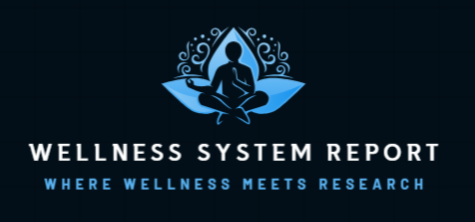In today’s fast-paced industrial landscape, efficiency is key. Whether in manufacturing, energy, transportation, or logistics, organizations seek ways to optimize operations, reduce costs, and increase productivity. One technology making a significant impact is the Human-Machine Interface (HMI).
But what exactly is HMI? And more importantly, how does HMI improve efficiency in operations? This article breaks down the role of HMI in modern industry and explores the many ways it enhances operational performance.
HMIs Screens and Displays play a crucial role in enhancing operational visibility and control within industrial environments. These interfaces provide operators with intuitive, real-time access to system data through graphical representations, such as gauges, charts, alarms, and process flow diagrams. By simplifying complex machine functions into easy-to-understand visuals, HMI screens enable quicker decision-making, reduce human error, and boost overall productivity
What Is HMI (Human-Machine Interface)?
HMI Defined
HMI, or Human-Machine Interface, is a user interface or dashboard that connects a human operator to a machine, system, or device. It enables real-time communication between users and machines, allowing operators to control, monitor, and optimize system functions efficiently.
Common HMI Applications
- Industrial automation
- Energy plants
- Water treatment facilities
- Transportation systems
- Building management systems
Key Components of an HMI
- Hardware: Touchscreens, panels, monitors, and keypads
- Software: Graphical user interface (GUI), data visualization tools
- Connectivity: Integration with Programmable Logic Controllers (PLCs), sensors, and SCADA systems
1. Real-Time Monitoring and Feedback
Faster Decision Making
With HMI systems, operators can monitor equipment and process status in real time. Visual cues, graphs, and alerts help them detect issues immediately and take corrective action before problems escalate.
Example:
In a bottling plant, an HMI can alert technicians instantly if a conveyor belt stops or if the temperature of a liquid rises above optimal levels. This minimizes downtime and avoids defective products.
2. Streamlined Data Collection and Analysis
Improved Data Accuracy
HMI systems collect and display data from multiple sensors and devices, offering a centralized view of operations. Unlike manual methods, automated data logging reduces human errors and enhances reporting accuracy.
Performance Metrics
Operators can review key performance indicators (KPIs) such as machine uptime, production rate, and cycle time—leading to data-driven decisions that increase efficiency.
3. Enhanced Control Over Processes
User-Friendly Interfaces
Modern HMIs use intuitive touchscreens and graphical dashboards, enabling operators to control complex machines with minimal training. This simplified control reduces the learning curve and boosts operator performance.
Remote Access
Many HMI systems offer remote monitoring and control capabilities. Managers can access systems from mobile devices, ensuring constant oversight without being physically present.
4. Predictive Maintenance and Reduced Downtime
Condition Monitoring
HMI systems can integrate with predictive maintenance tools that track equipment health. They provide alerts when a machine shows signs of wear, allowing proactive repairs.
Benefit:
This minimizes unplanned downtime and extends the life of assets—leading to significant cost savings and improved operational continuity.
5. Standardization Across Multiple Systems
Unified Interface
In large facilities with multiple machines and processes, HMIs can standardize controls and visuals across all systems. This consistency simplifies training, troubleshooting, and maintenance.
Operational Uniformity
Operators working on different machines benefit from familiar interfaces, improving cross-functional efficiency and reducing training time.
6. Improved Safety and Compliance
Safety Alarms and Notifications
HMIs can be programmed to alert operators about hazardous conditions such as overheating, pressure surges, or leaks. This real-time feedback enhances workplace safety and protects both personnel and equipment.
Regulatory Compliance
Accurate logs and automated reporting help businesses comply with industry regulations like OSHA, FDA, or ISO standards without extensive manual effort.
7. Greater Customization and Flexibility
Tailored Dashboards
HMIs allow operators to customize their screens based on roles or preferences. Engineers, supervisors, and technicians can all view relevant data, reducing clutter and increasing clarity.
Adaptability
As business needs evolve, HMI systems can be updated or scaled with minimal downtime, ensuring long-term flexibility and efficiency.
8. Faster Troubleshooting and Error Recovery
Diagnostic Tools
Advanced HMIs offer built-in diagnostics to pinpoint problems quickly. This reduces time spent investigating faults and speeds up repair.
Visual Fault Indicators
Animated graphics and color-coded alerts simplify the identification of issues, even for less experienced staff.
9. Integration with Industry 4.0 and IoT
Smart Connectivity
Modern HMIs connect with Industrial Internet of Things (IIoT) devices, enabling deeper analytics and automation. This integration enhances visibility across the entire operation.
Cloud-Based Monitoring
Cloud-connected HMIs support remote monitoring, data sharing, and collaboration across different locations or departments.
10. Training and Skill Development
Simulation and Training Mode
Many HMI systems offer a simulation mode that helps train new staff without interrupting production. This improves workforce competency and shortens onboarding time.
Visual Learning
The graphical nature of HMI systems aids in visual learning and reduces reliance on text-heavy manuals.
Real-World Examples of HMI Efficiency
Manufacturing
In automotive factories, HMI panels help workers monitor robot arms, ensuring precision in assembly lines and minimizing scrap.
Utilities
In water treatment plants, HMIs monitor flow rates, pH levels, and equipment status, optimizing resource usage.
Energy Sector
Power plants use HMIs to oversee turbines, fuel levels, and grid conditions in real time, preventing outages and improving energy distribution.
Challenges and Considerations
While HMIs offer many benefits, successful implementation requires attention to:
- User Experience (UX): Poorly designed interfaces can hinder rather than help.
- Cybersecurity: HMI systems connected to networks must be protected from cyber threats.
- Initial Costs: Upfront investment in hardware and software can be high, but the ROI justifies the expense.
Future Trends in HMI
- Voice-activated HMI controls
- Augmented Reality (AR) interfaces
- AI-powered predictive analytics
- Touchless gesture-based interaction
These innovations promise to make HMI systems even more efficient, intelligent, and user-centric in the years ahead.
Conclusion
Human-Machine Interfaces are revolutionizing how industries operate. By improving real-time monitoring, simplifying control, and integrating predictive maintenance, HMIs dramatically enhance operational efficiency. As businesses continue to adopt smarter technologies, the role of HMI in driving productivity, safety, and performance will only grow stronger.

